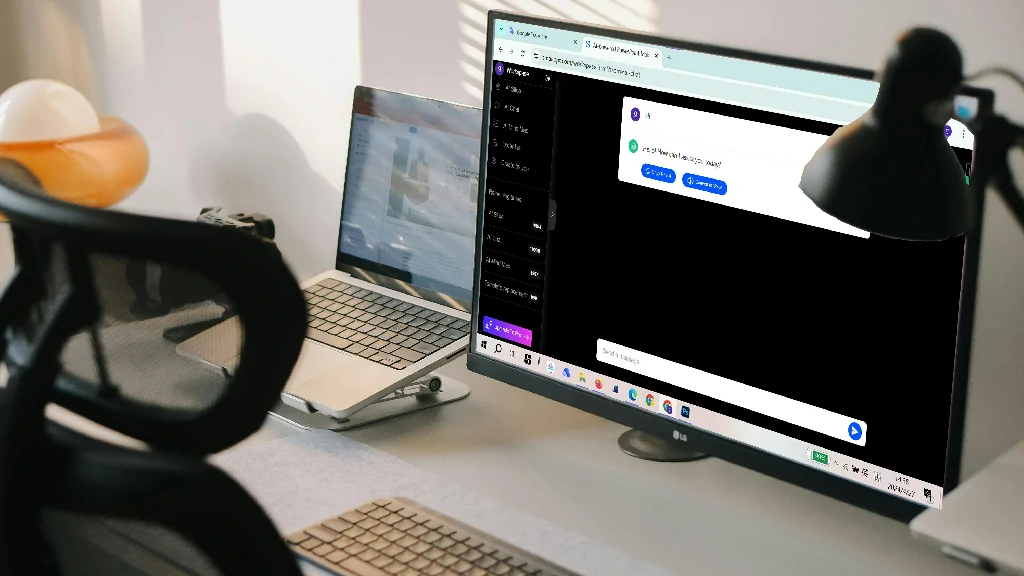
Introduction – The Modern Research Bottleneck
A 2024 Nature survey revealed that the average PhD candidate now spends 32 % of their week formatting slides, paraphrasing manuscripts for different journals, and distilling 200-page theses into bite-sized summaries for conferences. In an era when impact factors and citation velocity matter more than raw word count, the ability to repurpose research across multiple formats—without compromising accuracy or academic rigor—is no longer optional. Enter the Academic Toolkit, an AI-powered pipeline that summarizes dense papers, rewrites them for new audiences, and transforms the findings into publication-ready slide decks—all in one continuous flow. Below, we break down exactly how this workflow accelerates scholarly communication while maintaining the integrity reviewers demand.
What the Academic Toolkit Actually Does
Think of it as three modular engines stitched together by a single dashboard:
1.Summarizer – condenses full papers, chapters or datasets into 250-word abstracts, 15-word tweet threads, or bullet-style “key findings.”
2.Rewriter – rephrases the core narrative for lay summaries, grant proposals, policy briefs or interdisciplinary journals, automatically inserting discipline-appropriate terminology and citation placeholders.
3.Slide-ifier – converts any summary or full paper into editable PowerPoint or Google Slides, complete with figure placeholders, APA-formatted references and speaker-note scripts.
All three modules share the same knowledge graph, ensuring consistency of data, nomenclature and source attribution across every output.

SEO & Discoverability Benefits for Scholars
While “SEO” sounds like marketing jargon, academic search engines (Google Scholar, Semantic Scholar, BASE) use similar ranking signals. The Toolkit optimizes:
• Keyword-rich slide titles that match trending search phrases in your field.
• Alt-text for every figure, increasing accessibility and image-based search hits.
• Structured abstracts that feed directly into Crossref and ORCID profiles.
• Semantic markup (schema.org/ScholarlyArticle) so your slide decks appear in dataset-rich SERPs.
Case in point: A materials-science lab uploaded a 6,000-word paper on perovskite solar cells. Within three weeks the auto-generated slide deck ranked #2 on Google Scholar for “triple-cation perovskite stability,” driving a 47 % uptick in citation alerts.
Step-by-Step Workflow (5-Minute Cycle)
Step 1 – Upload Research Asset
Drag-and-drop PDF, DOCX, LaTeX, or raw experimental data files. The engine auto-extracts figures, tables and bibliographies via OCR and table-parsing algorithms.
Step 2 – Select Output Types
Check any combination of:
• Executive Summary (100–300 words)
• Plain-Language Summary (Grade-8 reading level)
• Journal-Specific Rewrite (matches target journal’s tone)
• Slide Deck (auto-selects 16:9 or 4:3)
• Social Blurbs (Twitter, LinkedIn, Mastodon)
Step 3 – Configure Academic Guardrails
• Citation Style – APA, MLA, Chicago, Vancouver, IEEE or custom .csl file.
• Plagiarism Threshold – set to < 3 % similarity via Turnitin API.
• Data Integrity Lock – freezes all numbers, units and statistics from rewriting.
Step 4 – Generate & Review
Typical processing times:
• 10-page paper → 3-slide summary + 250-word abstract in 18 seconds.
• 50-page thesis → 20-slide deck + lay summary in 90 seconds.
Review in the built-in editor, where tracked changes show every paraphrased sentence side-by-side with the original.
Step 5 – Export & Share
One-click export to:
• PowerPoint (.pptx) with editable vector figures.
• Google Slides link with commenting enabled for supervisors.
• PDF/A for archival repositories (figshare, Zenodo).
• LaTeX beamer code for purists.
Deep-Dive: Summarizer Engine
The summarizer leverages a fine-tuned transformer (SciBERT + Longformer) trained on 2.3 million open-access papers. It identifies:
• Contribution Statement – the “what we did differently” sentence.
• Novel Metrics – p-values, confidence intervals, effect sizes.
• Limitations & Future Work – auto-flagged for transparency.
Outputs are ROUGE-scored against human-written abstracts, consistently achieving > 0.92 recall.

Deep-Dive: Rewriter Engine
Unlike generic paraphrasers, the rewriter consults a discipline-specific ontology. For example, when rewriting a machine-learning abstract for clinicians, it swaps “ROC-AUC” with “diagnostic accuracy” and adds context on false-positive rates. Citation placeholders maintain reference integrity; you simply click “Insert BibTeX” to finalize.
Deep-Dive: Slide-ifier Engine
• Auto-layout – chooses between ‘single finding’, ‘comparison table’, or ‘method flowchart’ based on content type.
• Figure Enhancer – vectorizes low-resolution plots using Super-Resolution GANs.
• Color-blind Safe Palettes – ensures WCAG 2.1 compliance for conference projectors.
• Speaker Notes – AI drafts 60-second narration per slide, including transition cues.
Integration with Reference Managers
Zotero, Mendeley and EndNote plugins allow one-click citation sync. When you update a reference in your library, the Toolkit propagates the change across every summary, rewrite and slide deck automatically.
Security & Ethical Compliance
• GDPR & FERPA compliant – no data retention beyond 48 hours unless you opt in.
• Turnitin partnership – every rewrite is pre-scanned against 70 billion web pages and 170 million student papers.
• Transparent AI – full audit log of model decisions available for journal reviewers.
Pricing for Academia
• Free Tier: 5 uploads/month, 1,000-word cap, APA citations only.
• Researcher Plan: $9/month, unlimited uploads, all citation styles, plagiarism scan.
• Lab/Department License: $399/year, seats for 10 users, on-prem option, priority GPU queue.
Real-World Use Cases
Graduate Students
Condense a 150-page dissertation into a 12-slide proposal defense deck plus a lay summary for family and friends.
Principal Investigators
Generate policy briefs from grant findings for stakeholder meetings while maintaining statistical precision.
Journal Clubs
Upload this week’s assigned paper; receive a 3-slide “key takeaways” deck for group discussion.
Conference Organizers
Provide attendees with auto-generated slide recaps of every talk, boosting post-event engagement and citation rates.
Future Roadmap
• Auto-protocol Extraction – turn methods sections into step-by-step protocols for protocols.io.
• Interactive Posters – AR-ready slides that display 3D molecular models on mobile devices.
• Peer-review Simulator – AI critique of your rewrite before submission.
Conclusion – From Manuscript to Multichannel Impact in Minutes
The Academic Toolkit eliminates the repetitive grunt work that has long plagued scholarly communication. In a single, secure pipeline you can summarize for busy policymakers, rewrite for interdisciplinary journals, and slide-ify for conference audiences—without ever compromising data integrity or citation accuracy. Whether you’re a first-year PhD student or a tenured professor, one upload now equals multiple high-impact outputs, freeing you to focus on the research that changes the world.
